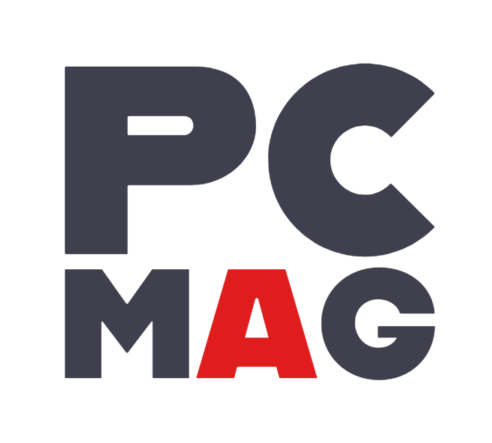Direct-to-Film (DTF) printing has revolutionized the textile industry, allowing for high-quality prints on a variety of materials. One essential component of this process is Raster Image Processor (RIP) software, which plays a crucial role in preparing designs for printing. This blog post will delve deep into RIP software for DTF printing, exploring its functions, benefits, and how to choose the right software for your needs.
What is RIP Software?
RIP software is designed to convert digital images into a format suitable for printing. It takes the pixel data from an image file and processes it to create print-ready files. This is particularly important for DTF printing, where precision and color accuracy are paramount.
The Importance of RIP Software in DTF Printing
In DTF printing, the RIP software serves several key functions:
- Color Management: Accurate color representation is crucial in any printing process. RIP software ensures that the colors in your design are reproduced as accurately as possible on the final product. It manages color profiles, ensuring consistency across different printers and materials.
- Image Processing: RIP software can handle complex image processing tasks, such as rasterization, dithering, and halftoning. This is essential for producing high-quality prints, especially when dealing with intricate designs.
- Layout and Nesting: RIP software helps optimize the layout of multiple images on the printing medium, minimizing waste and maximizing efficiency. This feature is particularly beneficial in a production environment where cost-effectiveness is key.
- Printing Parameters: Users can adjust various printing parameters, including resolution, ink density, and print speed. This level of control allows for customization based on the specific requirements of each job.
- File Preparation: Before printing, the software prepares files by converting them into the appropriate format for the printer, ensuring compatibility and reducing the likelihood of errors.
Benefits of Using RIP Software for DTF Printing
- Enhanced Print Quality: RIP software improves print quality through advanced color management and image processing techniques. This results in sharper images and more vibrant colors.
- Increased Efficiency: The ability to optimize layouts and automate various tasks reduces the time spent on print preparation, allowing for faster turnaround times.
- Consistency Across Prints: With color management tools, RIP software ensures that each print maintains consistent color accuracy, which is essential for branding and customer satisfaction.
- Flexibility and Control: Users have the ability to customize settings for different types of prints and substrates, giving them the flexibility to tackle a wide range of projects.
- Cost Savings: By optimizing ink usage and reducing waste, RIP software can lead to significant cost savings over time, especially for high-volume production.
Key Features to Look for in RIP Software for DTF Printing
When choosing RIP software for DTF printing, consider the following features:
- Color Management Tools: Look for software that offers advanced color profiles and calibration tools to ensure accurate color reproduction.
- User-Friendly Interface: A well-designed interface can significantly reduce the learning curve and streamline the printing process.
- Support for Various File Formats: The software should support a wide range of file formats, allowing for greater flexibility in design choices.
- Nesting and Layout Capabilities: Advanced layout tools can help maximize the use of materials and reduce waste, making the printing process more efficient.
- Compatibility with Printers: Ensure that the RIP software is compatible with your specific DTF printer and its associated technology.
- Technical Support and Community: Reliable customer support and an active user community can be invaluable, especially for troubleshooting and sharing best practices.
Popular RIP Software for DTF Printing
Several RIP software options are popular in the DTF printing community. Here are a few notable ones:
- CADlink Digital Factory: Known for its robust features, CADlink offers powerful color management tools and a user-friendly interface. It is compatible with various printers and supports a wide range of file formats.
- Wasatch SoftRIP: This software is renowned for its advanced color management and excellent print quality. It also offers extensive layout capabilities and is compatible with many printer brands.
- SAi Flexi: A versatile option, SAi Flexi combines RIP software with design capabilities. It allows users to create, edit, and print, making it an all-in-one solution for DTF printing.
- Onyx Graphics: Onyx offers comprehensive color management and workflow automation tools. It is particularly beneficial for larger operations looking to streamline their printing processes.
- Brother DTP Software: Specifically designed for Brother printers, this software provides excellent compatibility and ease of use for those using Brother DTF solutions.
How to Set Up RIP Software for DTF Printing
Setting up RIP software for DTF printing involves several key steps:
- Install the Software: Follow the manufacturer’s instructions for installing the RIP software on your computer.
- Connect Your Printer: Ensure that your DTF printer is correctly connected to your computer and recognized by the RIP software.
- Configure Printer Settings: Adjust the printer settings within the RIP software, including ink types, resolutions, and any specific configurations required for DTF printing.
- Set Up Color Profiles: Import or create color profiles that match your DTF printer’s capabilities to ensure accurate color reproduction.
- Import Designs: Bring your design files into the RIP software. Ensure they are in a compatible format.
- Optimize Layouts: Use the nesting tools to arrange your designs on the print area efficiently, minimizing material waste.
- Test Prints: Conduct test prints to fine-tune settings and ensure the quality meets your expectations before proceeding with larger runs.
Troubleshooting Common Issues
Even with the best RIP software, you may encounter some common issues during DTF printing. Here are a few solutions:
- Color Mismatch: If the printed colors do not match your design, check your color profiles and ensure they are correctly configured. It may also help to recalibrate your printer.
- Print Quality Issues: If you notice banding or blurring, inspect your printer for clogged nozzles or insufficient ink levels. You may also need to adjust the resolution settings in the RIP software.
- Software Crashes: Ensure your system meets the software’s requirements and that you have the latest updates installed. If crashes persist, consider reaching out to customer support.
- File Compatibility Errors: If you encounter errors when importing files, check to ensure they are saved in a compatible format. Most RIP software supports common formats like PNG, JPEG, and TIFF.
- Nesting Problems: If the nesting feature isn’t working as expected, review the layout settings and ensure your designs are appropriately sized for the print area.
Future Trends in RIP Software for DTF Printing
As technology continues to advance, several trends are shaping the future of RIP software for DTF printing:
- AI Integration: The incorporation of artificial intelligence could lead to more efficient color matching, predictive maintenance, and automated workflow optimization.
- Cloud-Based Solutions: Cloud technology may enable users to access RIP software remotely, improving collaboration and flexibility in print operations.
- Improved User Experience: As user needs evolve, software developers are likely to focus on creating more intuitive interfaces, making it easier for beginners to navigate complex printing tasks.
- Sustainability Features: As the industry shifts toward more sustainable practices, RIP software may include features that help minimize waste and optimize ink usage.
- Cross-Platform Compatibility: Future RIP software may enhance compatibility with various devices and operating systems, ensuring seamless integration into diverse workflows.
Conclusion
RIP software is an indispensable tool in the DTF printing process, offering numerous benefits that enhance print quality, efficiency, and consistency. By understanding its features and functionalities, you can make informed decisions that elevate your printing projects. Whether you’re a small business owner or part of a large production team, investing in the right RIP software can significantly impact your DTF printing success. As the industry continues to evolve, staying informed about trends and advancements will help you leverage the full potential of this powerful technology.




